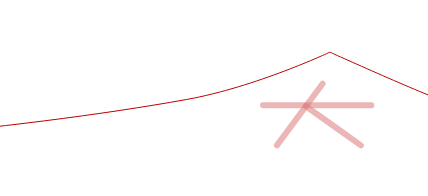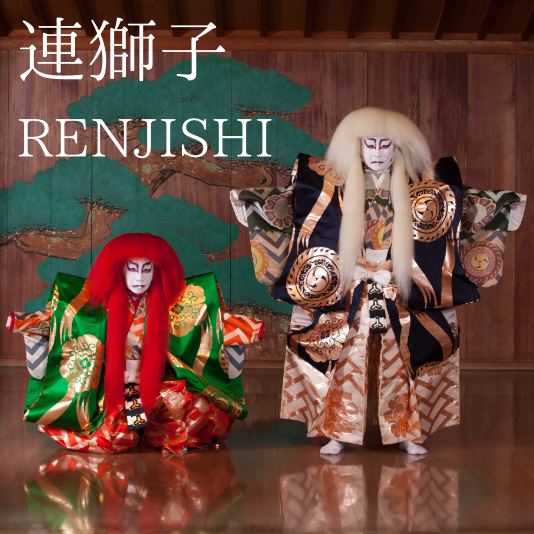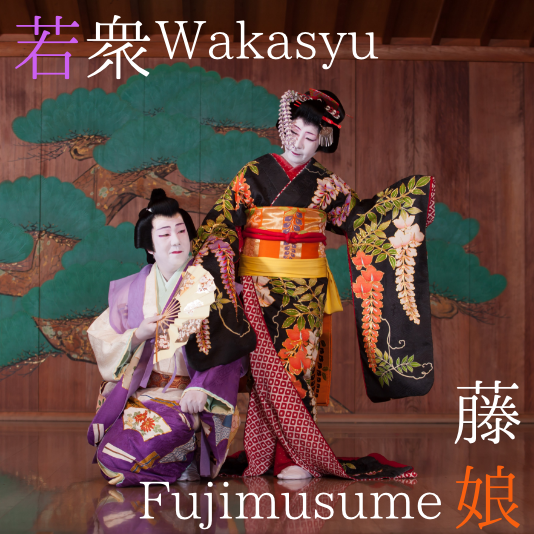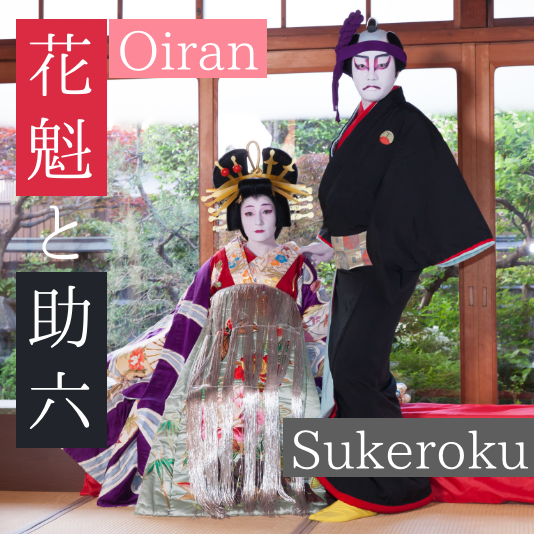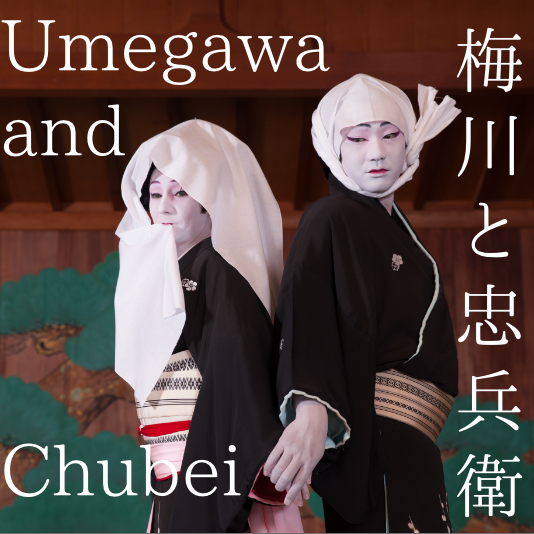The role you can experience
Please feel free to choose your role.
Casting is gender-free.
In the Japanese Traditional Dance, there are male and female roles.
However, the casting has always been gender-free.
Men play not only male role but also female role. Women do same.
It might be symbol for expressing imaginariness.
Dance with gender-free casting might be one of ways to express the dream world.
RENJISHI
連獅子

Father lion and cub
連獅子 親子
RENJISHI Family
RENJISHI Family
Experience Video | Father lion and cub
RENJISHI(a lion and his cubs) is one of repertories of the Japanese traditional dance.
It is based on a legend that a father lion pushes his cubs down to the bottom of a valley and raises only cubs who can climb the cliff.
This Japanese traditional dance was created from Kabuki dance transformed from “Ishibashi” [Shakkyo] of Noh.
In this experience, you can be transformed into the father lion or the lion cub.
Those costume, makeup, wigs are used in one of parts of Renjishi.
The costume is Noh style. Makeup is Japanese traditional makeup, “KUMADORI”.
Long white hair is expressed the father lion.
Red one is expressed lion cub.
連獅子
RENJISHI
RENJISHI
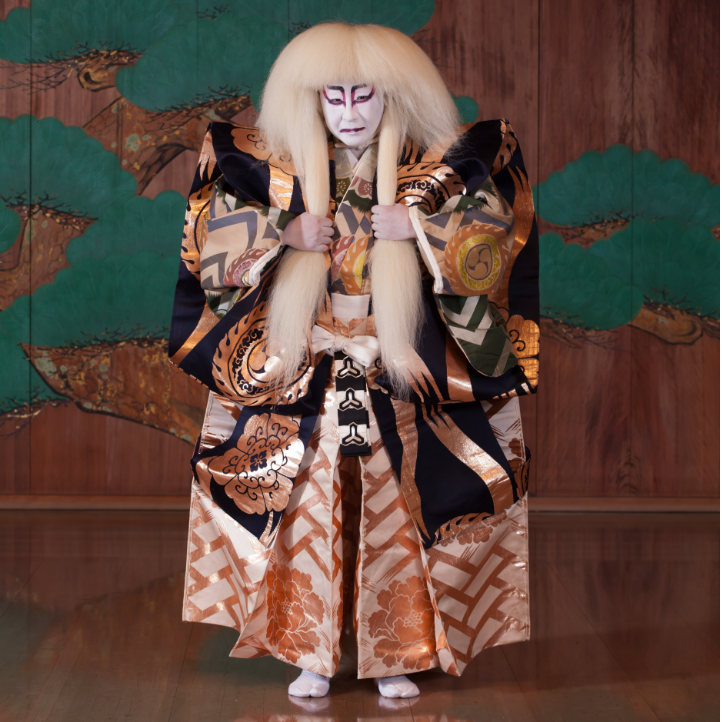
Father lion
Experience Video | Father lion

Fujimusume and
Wakshu
Wakshu
藤娘と若衆
藤娘
Fujimusume
Fujimusume

Experience Video | Fujimusume
“Fujimusume” is one of the most famous repertoires of the Japanese traditional dance.
A fairy of wisteria flowers shows up as a young girl, and dances to express her romance.
Even if people don’t know the Japanese traditional dance well in Japan, most of them might have seen Fujimusume,
who wears a Japanese hat and has a wisteria branch with flower, as Japanese dolls or design of Hagoita.
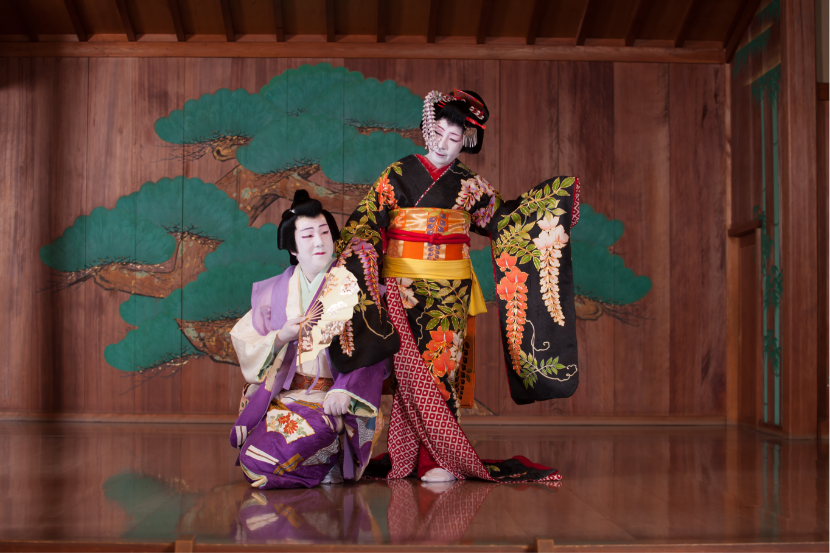
Wakasyu and Fujimusume
藤娘と
若衆
Fujimusume and Wakasyu
若衆
Fujimusume and Wakasyu
“Wakshu” is a boy role and an idol what is now called.
He makes people feel the taste of love.
Experience Video | Fujimusume and Wakasyu
藤娘
親子
Fujimusume Family
親子
Fujimusume Family
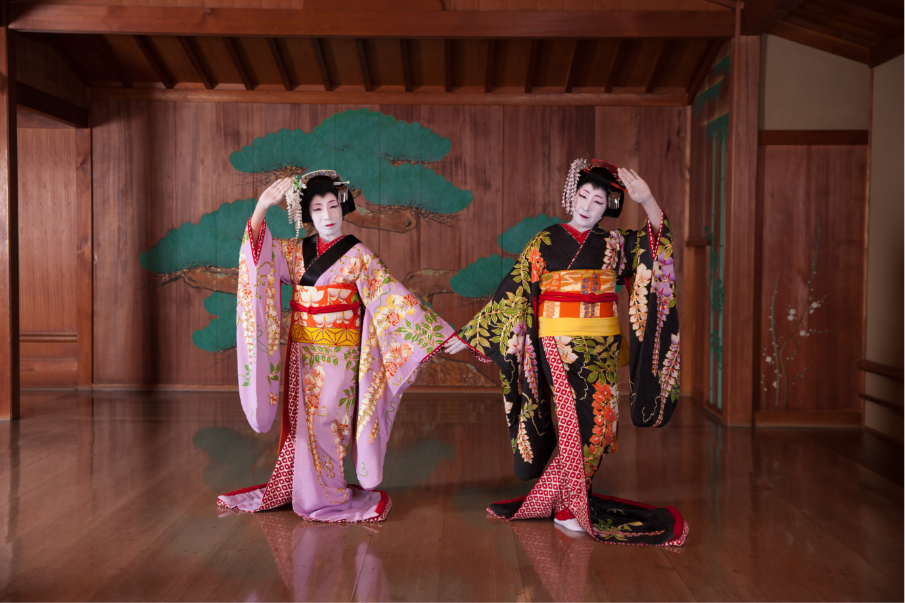
Mother and Fujimusume
Oiran and
Sukeroku
Sukeroku
花魁と助六
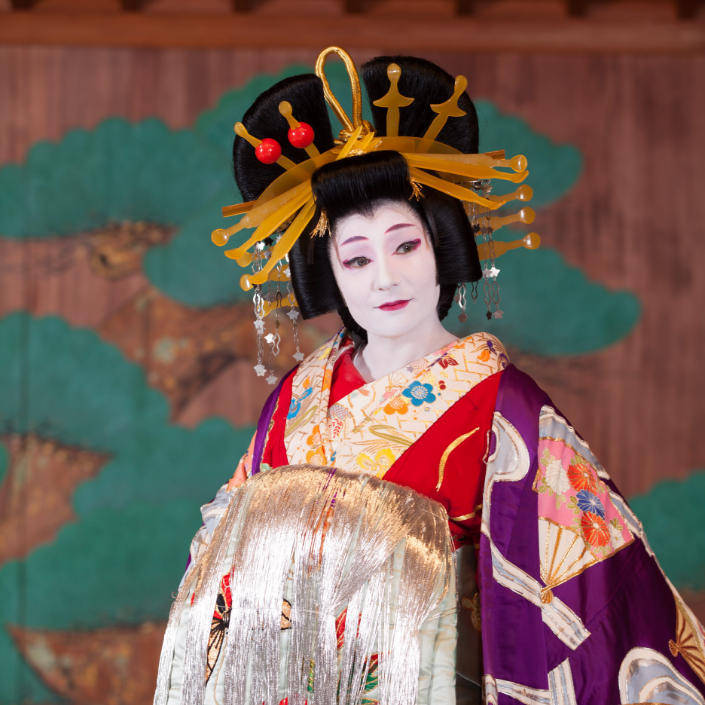
Oiran
花
魁
Oiran
魁
Oiran
What is “Oiran”?
The origin of the name is “Keisei” (leaning castle). It means a hetaera whom the castellan spends big money on enough to be no longer able to maintain his castle. “Oiran” is the first-class hetaera in Yoshiwara, and not only beautiful, but also versatile. Because they learned dancing, making Waka, Japanese art of tea ceremony and flower arrangement, and playing Koto and Shamisen by 15 years old. Only a handful of hetaeras with good looks and enough education were able to become “Oiran”. By the way, the costume and wig is about 25 kg ~ 35kg.
The origin of the name is “Keisei” (leaning castle). It means a hetaera whom the castellan spends big money on enough to be no longer able to maintain his castle. “Oiran” is the first-class hetaera in Yoshiwara, and not only beautiful, but also versatile. Because they learned dancing, making Waka, Japanese art of tea ceremony and flower arrangement, and playing Koto and Shamisen by 15 years old. Only a handful of hetaeras with good looks and enough education were able to become “Oiran”. By the way, the costume and wig is about 25 kg ~ 35kg.
Experience Video | Oiran
花魁と
助六
Oiran and Sukeroku
助六
Oiran and Sukeroku

Oiran and Sukeroku
“Sukeroku” is a repertoire of a nifty man who is type to enjoy cherry blossoms at night even in Yoshiwara where is the best Yukaku (a part of city dedicated to brothels) in Edo.
The so-called big star in Edo men.
The purple (Edo Murasaki) of the head band means a testament to the bond between his lover.
and him.
Sukeroku’s makeup is unique Kumadori.
Experience Video | Sukeroku

Umegawa and
Chubei
Chubei
梅川と忠兵衛

Umegawa And Chubei
梅川と
忠兵衛
Umegawa And Chubei
忠兵衛
Umegawa And Chubei
“Umegawa and Chubei” were lovers really exist in Osaka and were modeled for “Meido No Hikyaku” of Joruri.
Chubei worked as a Hikyaku in Awajimachi. He fell in love with Umegawa, a prostitute in Shinmachi. He committed a high crime of stole the public money which he has kept in order to ransom Umegawa. His crime was death punishment. They had risk of their death. So, they tried to go seeing Magoemon, Chubei’s biological father, to hometown in their lifetime. They could see Chubei’s father for short time. Chubei and Umegawa went on a journey without the destination in order to get away from the police.
Experience Video | Umegawa and Chubei

